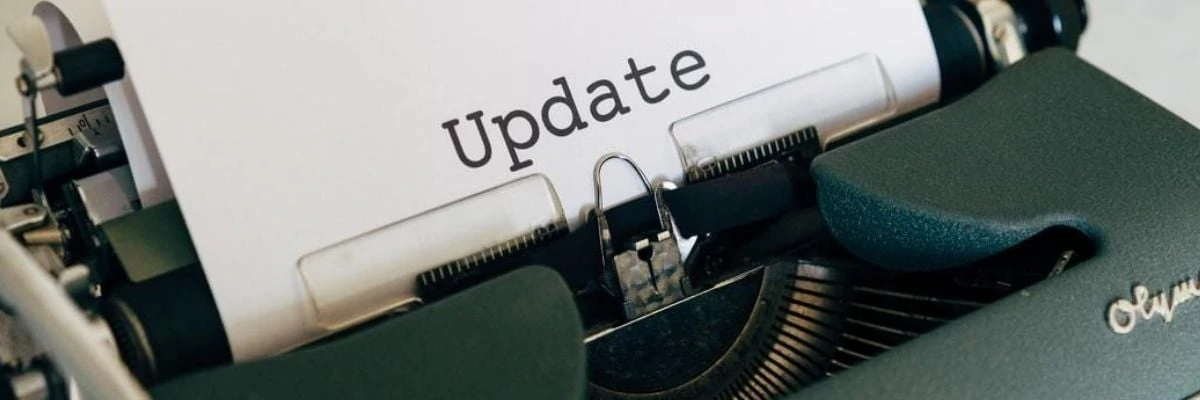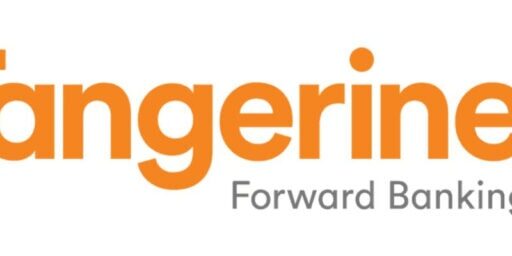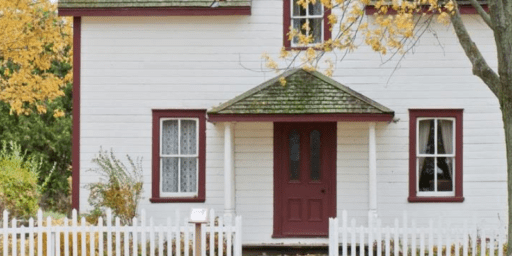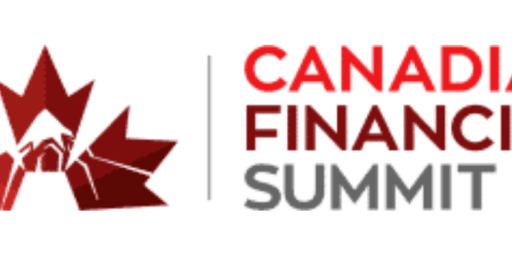RESP Portfolio Update – December 2013
It’s been about a year since my last RESP portfolio update and probably would have been longer if it wasn’t for a reader request for a quick update. The RESP portfolios for our children are setup with TD e-Series mutual funds which provide a low cost way to index the market. We contribute $2,500/account/year to get the maximum contribution from the government of $500/account/year. So basically $5k contributed gives us $6k to invest.
We went with index mutual funds instead of index ETFs because of the freedom of adding small amounts at a time without having to pay a commission for every purchase. Since opening the accounts, there have been some advancements in ETFs and discount stock brokerages (here is an updated comparison). If I were to setup an RESP account today, it would be a tough to choose between this and no-commission ETFs.
The long term plan for the RESPs is to be aggressive for the first 10 years (90% equities 10% bonds) with increasing fixed income as the University tuition nears. I copied the table from my RESP strategy article below.
Index 0-10yrs 10-14yrs 14-17yrs 18yrs + Canadian Equity 30% 20% 10% 0% US Equity 30% 20% 10% 0% International Equity 30% 20% 10% 0% Canadian Bonds 10% 40% 35% 0% GIC’s 0% 0% 35+% 75% Money Market Fund 0% 0% 0% 25%
Portfolio totals as of December 6, 2013
First RESP Portfolio (started 2nd quarter 2008):
| Investments | Units Held |
Price Per Unit |
Market Value |
% Holdings |
Book Value |
| TD CDN Money Mkt | 400.53 | $10.00 | $4,005.30 | 17.47 | $4,005.30 |
| TD CDN Index-e** | 228.59 | $21.91 | $5,008.45 | 21.85 | $4,638.48 |
| TD US Index-e** | 151.737 | $33.84 | $5,134.78 | 22.40 | $3,132.94 |
| TD CDN Bond Index-e** | 211.48 | $11.12 | $2,351.61 | 10.26 | $2,412.36 |
| TD Int’l Index-e** | 589.70 | $10.95 | $6,424.33 | 28.02 | $5,237.24 |
| Total as of Dec 6, 2013 | $22,924.47 | $19,426.32 | |||
Second RESP Portfolio (started 3rd quarter 2011):
| Investments | Units Held |
Price Per Unit |
Market Value |
% Holdings |
Book Value |
| TD CDN Money Mkt | 251.84 | $10.00 | $2,518.41 | 23.50 | $2,518.41 |
| TD CDN Index-e** | 129.93 | $21.91 | $2,846.85 | 26.57 | $2,552.91 |
| TD US Index-e** | 46.66 | $33.84 | $1,578.94 | 14.73 | $1,024.91 |
| TD CDN Bond Index-e** | 88.90 | $11.12 | $988.60 | 9.23 | $1,027.24 |
| TD Int’l Index-e** | 254.18 | $10.95 | $2,783.28 | 25.97 | $2,100.43 |
| Total as of Dec 6, 2013 | $10,716.08 | $9,223.90 | |||
We started the first portfolio in early 2008 near the peak of the market so there was a point in early 2009 where the market value of this portfolio was significantly below book value. It’s comforting to see that re-balancing with new money every year has brought positive results. This portfolio is up about 18% since inception (not including annual contributions or Canadian Education Savings Grant). While the % holdings on some of the mutual funds appear to be on track, there is way too much cash. I hope to deploy the cash in the coming year.
The second RESP portfolio was started near mid 2011, which fortunately, was during a small market correction. Since last year, I managed to bring the $ holdings of each of the mutual funds to “near” target amounts. I had a hard time adding to the US index as it’s been making highs all year. Like the first portfolio, there is too much cash and will be re-balancing in the new year. This account has returned 16% since inception (not including annual contributions or Canadian Education Savings Grant).
If you have setup an RESP, who is your provider? What is your investment strategy?
I've Completed My Million Dollar Journey. Let Me Guide You Through Yours!
Sign up below to get a copy of our free eBook: Can I Retire Yet?











I’ve been looking around for an specific RESP contribution in a self directed account in a blog. These are very difficult to find surprisingly.
I changed the bank directed (RBC target 2030 ) for both of my kids. I started them as soon as they were born from my experience of starting my professional career with 40 k owing from university. I didn’t want my kids starting off like I did.
I am looking at ETF’s because of the limited time on stocks i gaining the amount I want. I am looking at these 2 ETF’s: XAC for 70 % of my allocation (US/International equity mix) and VCN 30% (Canadian mix). The total MER on these is approximately 0.28. I’ll purchase more shares on a monthly or bimonthly basis to reduce the purchase fees. I am not going to allocate 10% to bonds for right now as to allow growth of this until my daughter turns 12. At that point, I’ll move 10% of allocation to bonds and increase this allocation every year until she is 18. The same will apply to my son. I may change this assest allocation later depending on our financial situation (which will substantially better by then).
Based on what I stated above, can you provide any insights or suggestions on ETF’s for an RESP or the allocation with reasons for each?
Thanks
Hi Dino,
If I were to use ETFs for our RESP, I would do the same as you. XAW (or XEF + XEC) + XIC/VCN. As they get older, I would probably switch to the Vanguard all in one for bond exposure, like VGO or VBAL (https://milliondollarjourney.com/all-in-one-etfs-battle-vanguard-vs-ishares-vs-bmo.htm). Right now, the TD e-series is working for me, and the benefits are changing to ETfs is not yet greater than the pain of the changing process. :)
@Le Barbu, I don’t think it’ll be as easy as you think. Most Financial institutions won’t let you withdraw any money without proof of attendance of a qualifying post secondary school.
Check out Big Cajun Man’s blog for his run ins with TD trying to get money for his kids attending University (I won’t link out of respect for MDJ, but you should be able to google it)
@Paul T, I know kids have to be eligible for sure (proof of attendance etc) but there is a big amount available/year before to give a proof of expenses (scholarship, rent, food, books etc) . I will read that and see if I’m hurting myself right now.
That is a very generous bonus! We get $1k for every $5k deposited (for 2 kids). The only thing i’m not clear on is the withdrawal amount. Can you simply withdraw $20k/kid/year?
@FT, because the bonus is that generous, thats why I took the bet on the future withdrawals. I know about the 20k$ but I may be a little hassle to do it. Like we say, we’re gonna built the bridge when we have to cross a river. In some cases, we also have to dig a river when we are in need to build a bridge!
@Le Barbu, if your kids educations are covered, then why not top up TFSA now before using RESP?
Hi FT, thanks to comments
My rational to do this? I just want to get the gov subsidies (30% because I’m in Québec) so, every year I contribute for 5k$ (2×2,500$) and get 1,500$ from fed. & prov. In about 5 years, I’ll find a way to withdraw as much as I can every year (20k$/ kid without penalty) and fill our TFSAs. Is there a flaw here I didn’t see?
The other consideration is if I fill TFSAs now and I get a windfall (bonus, inheritance, whatever) I cannot go back with RESP but TFSA room is still available. Right now, my plan is to fill RRSPs and RESP* every single year and repay my mortgage @ 3.49% with the remaining cashflow. I got a HELOC @ 2.85% that I use to buy as much ZCN as I can. Actually, mortgage is down to 85k$ and HELOC at 95k$
*to get the max subsidies
RESP is 100% Canadian stock (ZCN) because we consider this account as a part of our entire portfolio. We hold no bonds, and RESP is not tax advantaged for foreign holdings (US and international stocks are in RRSPs). When kids will be post-secondary, we will not even need this money because mortgage will be repaid in full and scolarship is cheap in Quebec. I will pull that money and top-up the TFSAs. My biggest consideration then will be to do this with no penalty and no taxes!
Interesting! I started my son’s just after your first child, in August 2010, and have over 21k by investing in dividend stocks. I haven’t contributed yet for this year, but have done very well by investing in dividend stocks on questrade… even though I did make some mistakes in the beginning and lost probably $500 within the first 2 years. Ah well… there’s still time!
Thank you so much for posting, and for all of the information on RESP’s you have, I have found it incredibly useful, and helpful, when there isn’t a whole lot of info out there.
Congratulations on your success thus far, and thanks for the kind feedback.
I opened up an RESP trading account for my kids (family plan, kids are 3 yr old & a 1 yr old) as their primary RESP account. The plan has been to buy stocks of companies that my kids will grow up being exposed to (in my attempt to get them interested or gain some knowledge in the world of finance; as well as capital gain).
I currently mix equities with ETF’s (with the majority in stocks) and will eventually move to conservative investments as they get closer to going to post-secondary schooling. I figure that my kids will require a minimum of $100-150k each when they go to school, so I need to be more aggressive with this investment right now if I want to help them pay a good chunk of these costs.
@ the comment above “Because of the governmental contribution, it’s often better to contribute to RESP first and your retirement account only after you have contributed the maximum to the RESP.”
My only comment is that there are no scholarships or student loans for retirement; so I think if you really have to choose, set money aside for your retirement and try to help your child in other ways (like with their homework).
I admit I have not read all your past articles about RESP, but there are many advantage to RESP, beyond just saving for education. You point out the 500$ contribution from the Government of Canada, but in Québec, you get an additional 250$ form the Québec Government. For low income family, the Government of Canada gives 500$ the first years, regardless of your contribution (even if you put 0$, the government gives 500$), and 100$ per year afterward for the next 15 years. So, low income family should all set up a RESP account and have that free 2000$.
Because of the governmental contribution, it’s often better to contribute to RESP first and your retirement account only after you have contributed the maximum to the RESP. Your kid will have to pay income taxe on the money he gets from the RESP when he uses it later, but ONLY on the interest made and on the governmental contribution. In the end, the money the principal put in the account is still your money when your kid reach 18. This means several things: 1) you can give the principal to your kid, 2) you can keep it for you. In this case, if you have any space left to contribute to your RRSP, you can use the principal from the RESP and contribute to your RRSP. Chances are that your are in a higher tax bracket at 45 when your kid is 18 then you were at 27 when he was born and thus, save more taxes. So putting money in the RESP first make sense, you can still use it later. 3) if you are tangled into a divorce, the principal you paid in the RESP is still considered your asset, not the kid’s asset, you may have to share it with your former wife or husband.
If your kid does not go to post-secondary education, you will have to reimburse the governmental contribution and pay taxes on the interest made, with a 20% additional taxe, unless you have room to transfer the interest in your RRSP. Remember that trades and other post secondary education are acceptable as well, not jus the university. You can also wait a few years after high school in case you kid changes his mind and do some post-secondary education later on.
@Bob, you could also index with Questrade with low cost ETFs (commission free too).